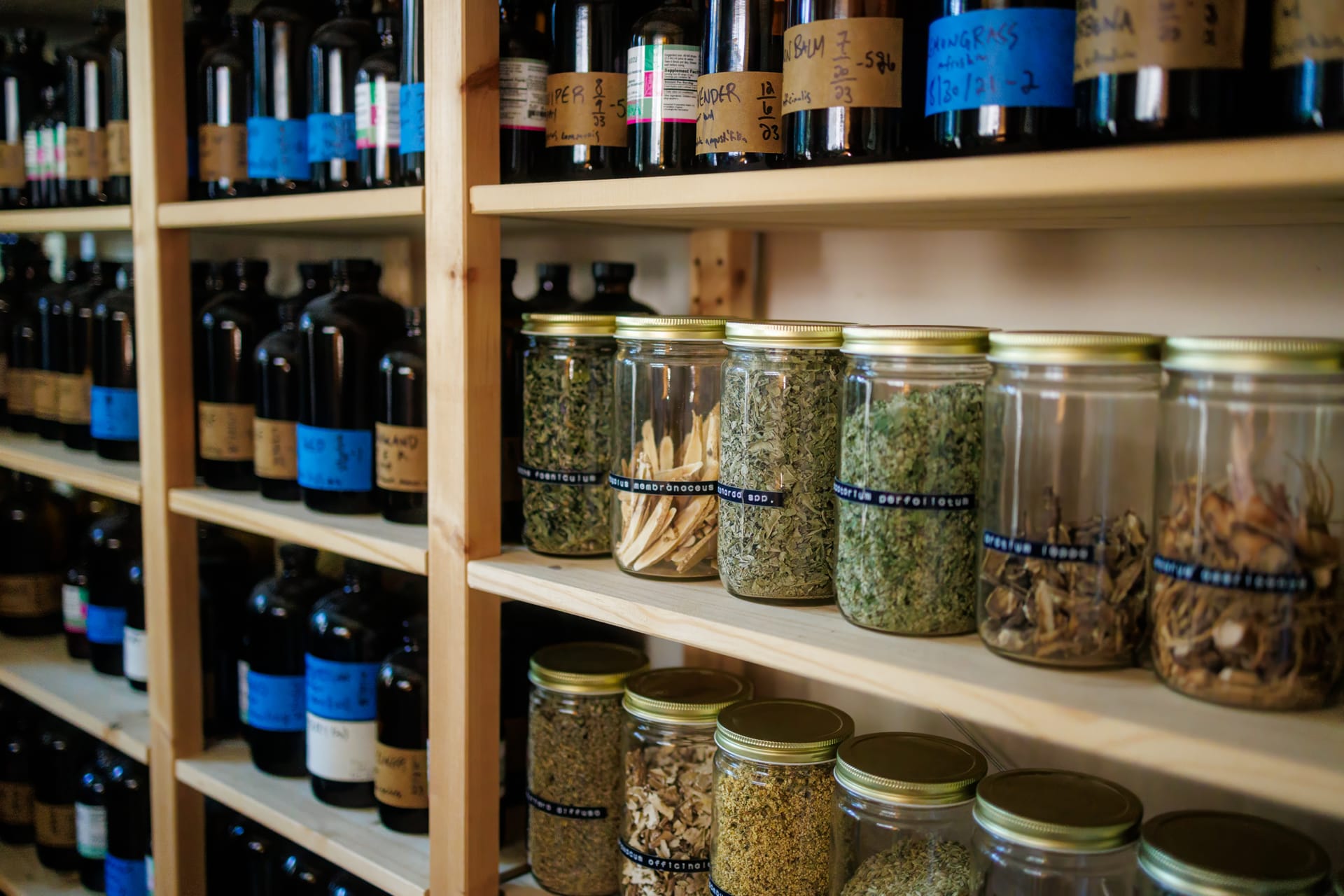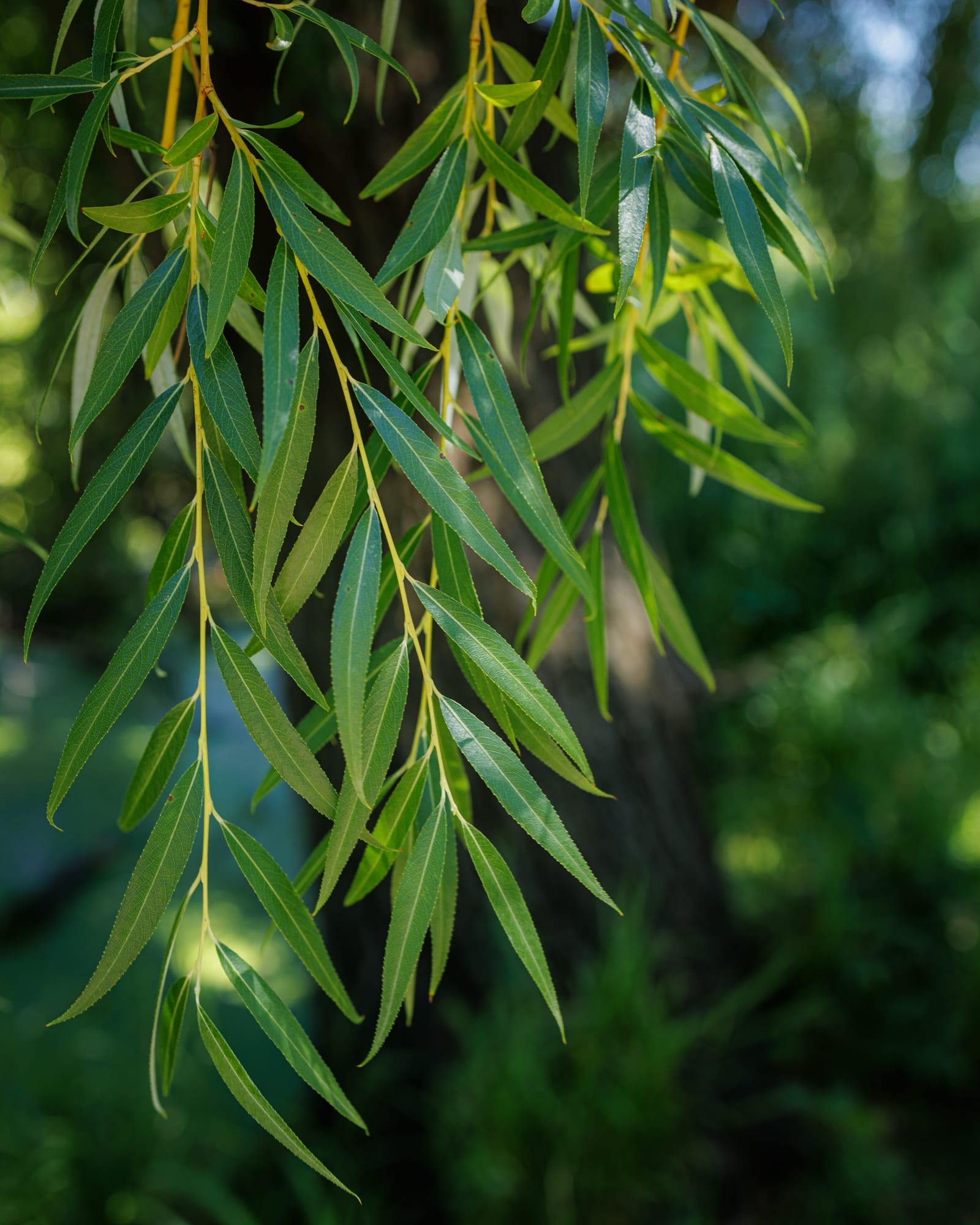Natural vs ‘Unnatural’ in Herbal Medicine

The herbal medicine industry loves to conjure this distinction in marketing their 'natural' products over and above 'unnatural' pharmaceuticals.
In many ways, this distinction can be helpful, because generally, whole plant medicine is much safer and more effective than utilizing isolated constituents of plants as medicine.
But how does what is ‘natural’ become divided from what is ‘unnatural’? What makes a substance or a chemical 'unnatural'? Who decides, and what is their end game in making this distinction?
Many would say that synthetic substances are unnatural because they are produced by humans, and don't occur 'naturally' in the 'natural' world.
And this distinction is significant, due to the consequences of harmful synthetic "forever chemicals" like PFAS (per- / polyfluroakyl substances) which do not degrade and have been found in the blood and breastmilk of people and wildlife the world over.
On the other hand, this distinction is based upon the assumption that because these chemicals are made by humans, they are unnatural, which reinforces the notion that humans are separate from the natural flow of life, and that their creations are also separate.
This assumption leads to a limited perspective, one where we are cut off from seeing, experiencing, and being a part of the wildness beneath the steel-framed, glass-mirrored skyscrapers of big cities, and the geology woven among the asphalt that lines our streets.
While these human creations generate their own form of destruction, allowing ourselves to experience the signature of earth beneath widens our perspective, allowing us to bring more intention to our creations, because we understand the consequences that go with alchemizing earth-based materials into a more refined form.
The Origin of the Split
One of the first widely distributed modern pharmaceuticals was salicylic acid, derived from the bark of Salix alba, the White Willow tree. By itself, isolated salicylic acid produced undesirable side effects, which led doctors searching for better alternatives. The German Bayer company took charge of this search by starting with acetanilide, a waste product of the dying process and a coal-tar derivative. From the foundation of acetanilide, other derivatives were found, with fewer side effects. Eventually, in 1899 they created a drug with the chemical name acetylsalicylic acid. Since chemicals could not be protected by patent, Bayer marketed the drug as 'Aspirin', since brand names could be legally patented.
Consider the wild labyrinth of abstraction outlined in this process. Beginning with a whole plant medicine, White Willow bark, which on its own and with proper dosage and delivery, has no undesirable side effects. But, due to the reductionist approach to medicine at the time, doctors and other stakeholders wanted to find the single constituent that elicits the anti-inflammatory and fever reducing effects that Willow bark offers. So, they isolate salicylic acid. But then there are side effects when you separate the part from the whole–perhaps there were other constituents in Willow bark balancing the harmful side effects of the active constituent? I'm guessing so.
And, of course, you can't patent a plant, so Bayer engaged in a complex process of alchemy beginning with coal-tar, which is a toxic by-product created in the process of producing gas from coal (which remember, coal itself is a fossil fuel that comes from the remains of plants that lived millions of years ago–we just can't avoid deriving medicines from plants can we?), they keep refining until they find something with a reasonable level of undesirable side effects, just little enough to market to a broad audience, slap a new name on it, and make a fortune.

Again, it's not that this process is not natural, it's just that many of the aspects of this process deeply abstracts the substance from its original context. And I believe it is when we remove something from its original context, and apply it in new contexts, without intention or attention to the potential consequences this introduces into the new system or context, that harm and imbalance can more easily occur.
Instead of arguing over whether or not a substance in natural or unnatural, what if we were to bring greater focus on what we do with the creations we make? Would it then be possible to produce synthetic substances that harmoniously complement those substances that self-organize and generate without the need for guidance by human hands?
For this shift in perspective to work, we would have to more accurately define 'synthetic' as human-created and thereby natural, albeit slightly to greatly more abstracted from the context of the environment from which it originated.
“[Natural vs unnatural], a line we police so closely and with such judgment. But the difference between what is synthetic and natural… is often something as trivial as the placement of a single hydrogen molecule: 'When the benzene ring is incorporated into certain molecules, it is essential to life. But in other configurations, slight tweaks in the composition and arrangement of atoms render benzene part of a toxic, possibly carcinogenic, molecule. And on its own, there is ample evidence that benzene causes cancer.'
One of the main selling points of herbal medicine is that these remedies are natural and thus superior to medicines synthesized in a lab. A tremendous amount of energy is spent claiming, if not carefully defining, this boundary between what is natural and what is unnatural (synthetic). Yet as Altman pointed out, the crucial difference is not whether a substance is natural or not, but rather how the arrangement of chemicals in the substance affects the body. In other words, you can't just assume that natural is good and unnatural is bad. What matters is how the substances are produced and used, with the intentions and attention of those producing the medicines.” – Ann Armbrecht, The Business of Botanicals, p. 66
Intention & Attention
While it would be easy for us to say, “First Curve Apothecary products are made with natural ingredients, and are therefore better” It would be far more accurate to say, as we do, that “First Curve Apothecary products are made with the utmost care and attention to every step of the process, using vibrant, recently harvested ingredients that have been minimally processed, only to the degree necessary to extract the widest breadth of constituents possible, capturing the healing properties and vital force of the plant at its peak." Sure, it's a little verbose, but it gets to the nuance that is often omitted when herbal products brands vaguely claim their products are ‘natural’.
The only part of the process we don't have control over is the cultivation of the herbs, which we've entrusted to the wonderful folks at Golden Hour Farm about 3 hours from Chicago, who cultivate the majority of the herbs we use in our products (the rest are sourced from other farms we trust).
I've been to Golden Hour Farm, I've had dinner with Scott and Christian, the owners. They are lovely and soulful, and they care deeply about the plants they tend. I've picked Calendula from their fields, dried herbs on drying racks, wild-foraged Elderflower and St. John's Wort with them. I saw the intention and attention they put into every step in the process.
You just can't get this life force and vitality from herbs that are grown as a monocrop over several acres (thousands of miles away), essentially in the same way corn is industrially farmed: mechanically harvested, the farmers / pickers paid a below-minimum wage, the herbs tossed around from grower to processor to buyer to brand, exposed to open air and shifting humidity, held in store for several years to increase the value, and then finally shipped over to the US (likely the lowest quality is exported) to finally be made into an herbal extract or tea blend.
These are herbs commodified, and herbs commodified are herbs drained of their healing virtues and life force.
Are they natural?
Yes.
But they are so abstracted from their original context that the trade they are cultivated within is likely doing more harm than good.
First Curve will only grow to the extent that we can maintain the attention and intention necessary to preserve the vital force of the herbs we craft into our products. This means we can only expect to make a humble living for ourselves. But making money isn't the point. Never has been. It's always been about connecting people with plants, with their bodies, and the ecosystems from which we grow.


Member discussion